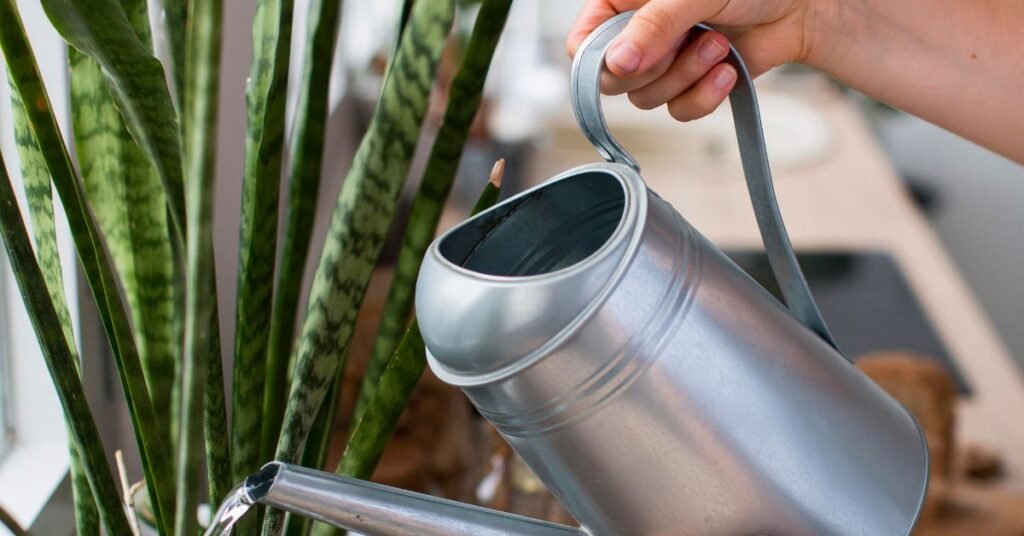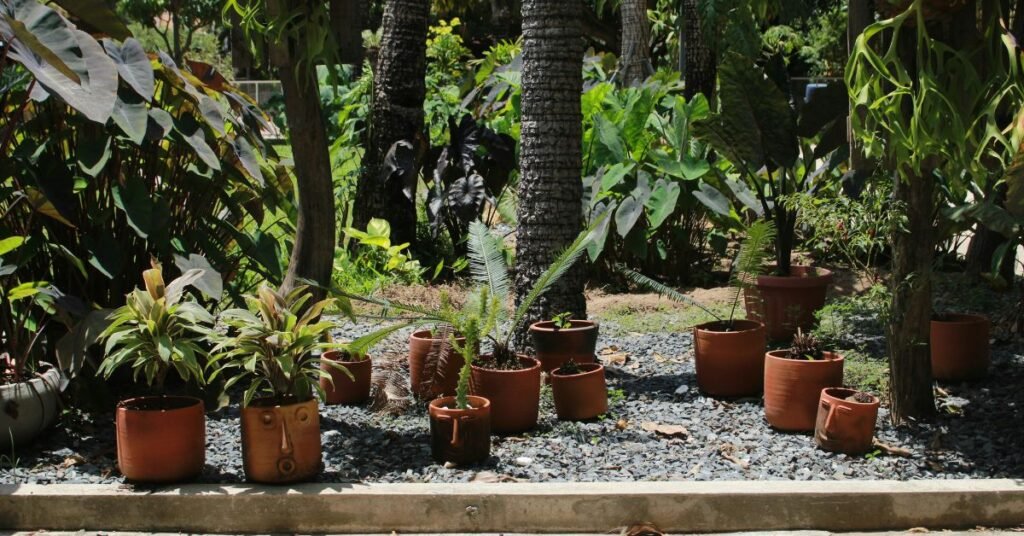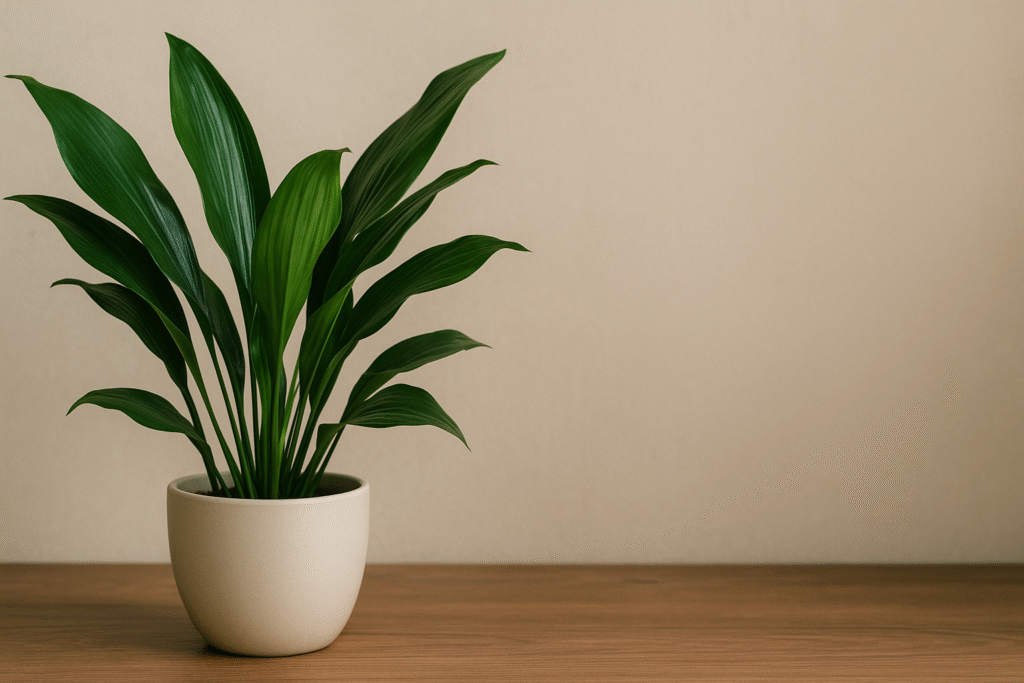The Cast Iron Plant (Aspidistra elatior) is one of the toughest and most forgiving indoor plants you can grow. With its rich green leaves, low-maintenance nature, and ability to thrive in shade, it’s an evergreen favorite among plant lovers. Whether you’re new to gardening or simply want a plant that doesn’t demand attention, the Cast Iron Plant is your perfect match.
Introduction to the Cast Iron Plant
The Cast Iron Plant gets its name from its near-indestructible nature. Originating from the shaded forests of Japan and Taiwan, it became popular in Victorian times for its ability to survive in low light and smoky indoor environments. Even today, it’s admired for the same reason — it survives where most plants fail.

Appearance and Growth Habits
Elegant and Strong Foliage
This plant forms dense clumps of long, glossy, dark-green leaves that emerge directly from underground rhizomes. The leaves can reach up to 60 cm (2 feet) tall, creating a lush, upright display.
Slow but Steady Growth
The Cast Iron Plant grows slowly but steadily, making it ideal for indoor decoration. Though it rarely flowers indoors, its small, purple-brown blooms near the soil line are unique and fascinating to observe.
Popular Varieties of Cast Iron Plant
Aspidistra elatior ‘Variegata’
Characterized by long green leaves streaked with white or cream-colored stripes — adds brightness to dark corners.
Aspidistra elatior ‘Milky Way’
Dark green leaves covered with small white specks, giving a starry-night effect.
Aspidistra lurida
Features narrower, upright leaves perfect for compact spaces and modern interiors.
Ideal Growing Conditions for Cast Iron Plant
Light Requirements
The Cast Iron Plant thrives in low to medium light. It’s perfect for rooms with minimal natural light. Avoid direct sunlight, as it can scorch and fade the leaves.
Temperature and Humidity
Maintain indoor temperatures between 60–75°F (15–24°C). It tolerates mild cold but should be protected from frost. Moderate humidity is best, but it can survive in dry air too.
Soil Preferences
Use a well-draining soil mix — a blend of potting soil, perlite, and peat moss works perfectly. The roots dislike standing water, so make sure the pot has proper drainage holes.
Watering Routine
Overwatering is the only common mistake. Let the top 2 inches of soil dry out before watering again. During winter, water less frequently as the plant’s growth slows.
Fertilizing Schedule
Feed once every 4–6 weeks during spring and summer using a balanced liquid fertilizer diluted to half strength. Avoid feeding in winter.
How to Propagate a Cast Iron Plant
Propagation by Division
The simplest way to propagate is by dividing the rhizomes:
- Remove the plant from its pot carefully.
- Separate the root ball into sections — each with at least 2–3 leaves.
- Replant each division in fresh soil and water lightly.
- Keep in indirect light until new growth appears.
Propagation is slow but reliable, ensuring you can expand your plant family over time.
Repotting the Cast Iron Plant
Since it’s a slow grower, the Cast Iron Plant doesn’t need frequent repotting. Repot every 3–4 years or when roots start crowding the pot. Choose a slightly larger pot and refresh the soil to keep it nutrient-rich.
Common Problems and Their Solutions
Even though the Cast Iron Plant is low-maintenance, minor issues can arise. Here’s how to fix them easily:
Yellowing Leaves
Usually caused by overwatering or poor drainage. Allow soil to dry and check that your pot drains properly.
Brown Leaf Tips
Dry indoor air or too much fertilizer can cause leaf tips to brown. Mist occasionally or flush the soil to remove fertilizer salts.
Pests
Spider mites and scale insects can occasionally appear. Wipe the leaves with a damp cloth and use a mild insecticidal soap if necessary.
Drooping or Dull Leaves
This usually means the plant needs more indirect light or has been overwatered. Adjust its location and watering schedule accordingly.
How to Style the Cast Iron Plant Indoors
Perfect for Shady Corners
Its dark green foliage looks stunning in areas that lack sunlight, such as hallways, entryways, or offices.
Adds Elegance to Modern Décor
Pair it with ceramic or matte black pots for a minimalist and sophisticated look.
Outdoor Use
In shaded patios or verandas, the Cast Iron Plant adds a lush, tropical feel. It also works well as a groundcover under trees where sunlight is limited.

Seasonal and Winter Care Tips
During colder months, the Cast Iron Plant requires very little care:
- Reduce watering frequency.
- Stop fertilizing until spring.
- Keep away from cold drafts and heating vents.
- Clean leaves occasionally to remove dust and enhance photosynthesis.
Following these steps keeps the plant healthy and glossy even in winter.
Is the Cast Iron Plant Safe for Pets?
Yes! The Cast Iron Plant is non-toxic to cats, dogs, and humans. This makes it one of the safest indoor plants to keep around children and pets.
Health and Environmental Benefits
The Cast Iron Plant doesn’t just beautify your home — it also helps purify indoor air. Its broad leaves absorb dust and certain toxins, improving air quality and humidity. Having it indoors can create a calmer, fresher environment.
Beginner’s Quick Tips
- Avoid direct sunlight.
- Don’t overwater — let the soil dry before the next watering.
- Wipe leaves regularly with a damp cloth.
- Keep it in the same spot; it dislikes frequent moving.
- Be patient — it’s a slow grower, but worth the wait.
Why Every Home Needs a Cast Iron Plant
Whether you’re a beginner or a busy homeowner, this plant is a perfect choice. It tolerates low light, neglect, and irregular watering, yet always looks lush and vibrant. Its elegance and strength make it a timeless piece of natural décor.
Conclusion: A Symbol of Endurance and Beauty
The Cast Iron Plant is proof that simplicity can be beautiful. Its ability to thrive in the toughest conditions and still look fresh makes it a must-have for every plant lover. Bring this resilient plant into your home, and you’ll enjoy green beauty that stands the test of time — effortlessly.

